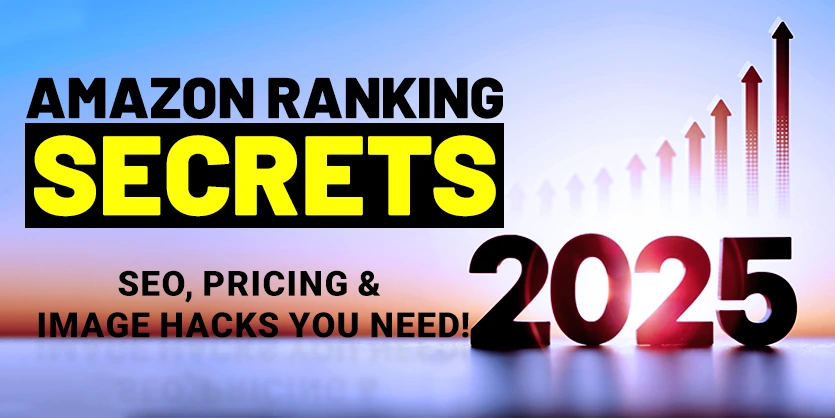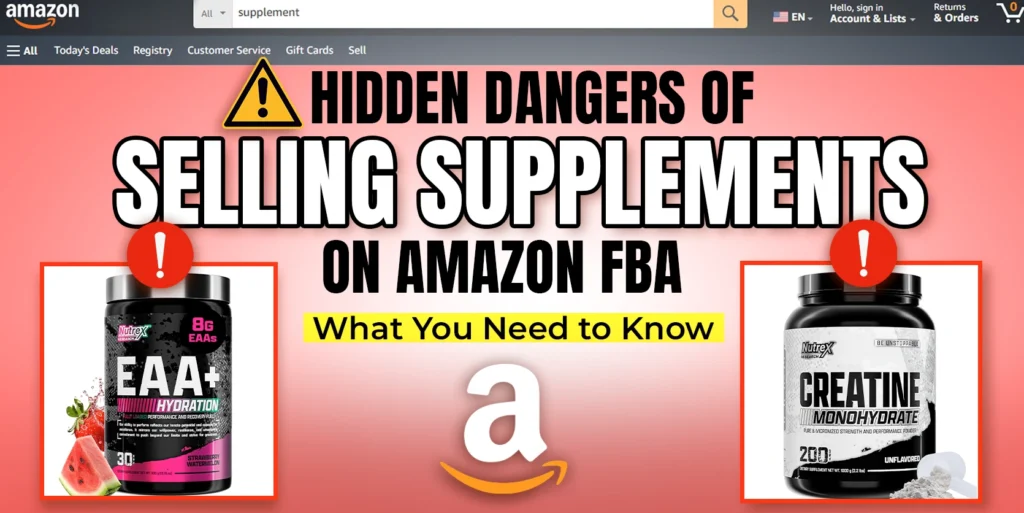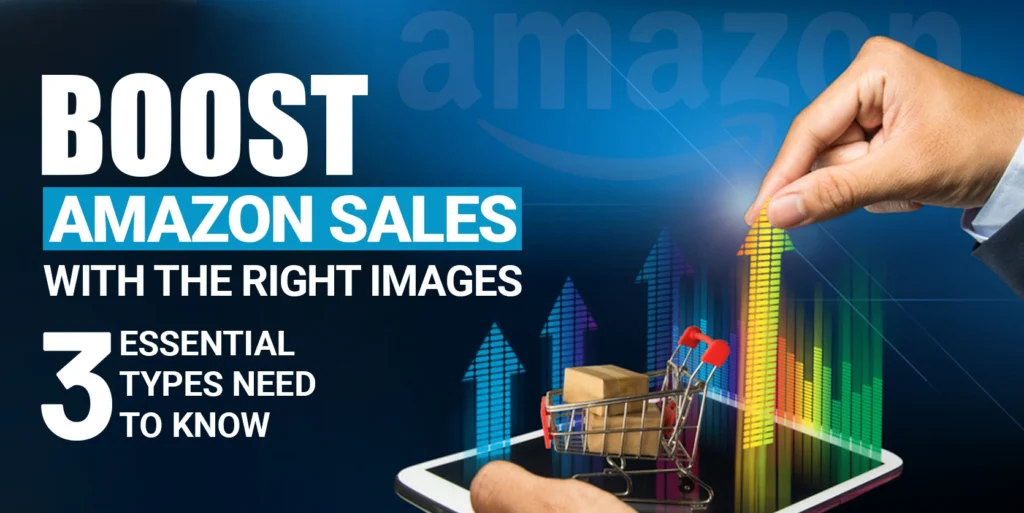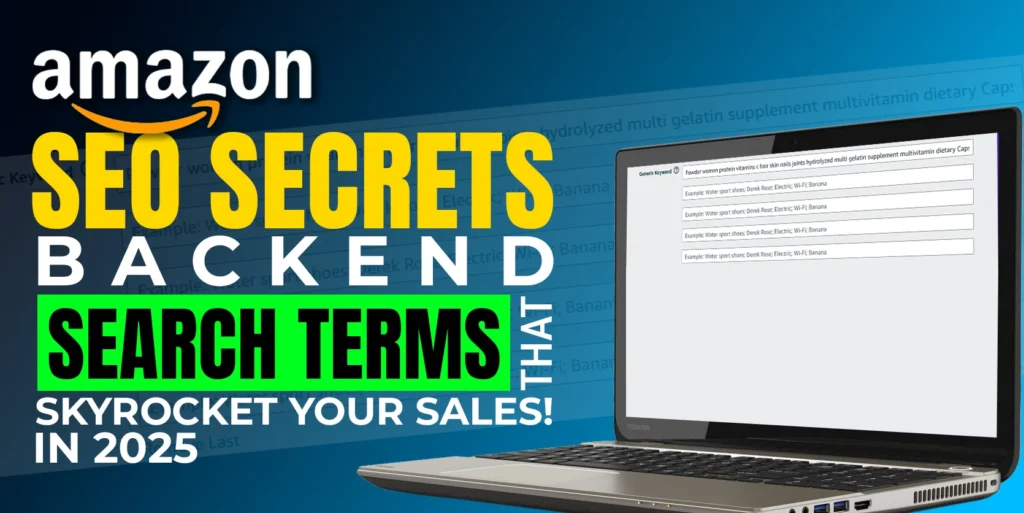Ranking on Amazon is crucial because it directly affects how often your product is seen by potential buyers. Most customers don’t scroll past the first page of search results, so if your product isn’t ranked high, it’s likely to be overlooked. A higher rank not only brings more visibility but also builds trust—people tend to buy what they see first. Over time, better rankings mean more clicks, more conversions, and ultimately more revenue. It also increases your chances of being featured as Amazon’s Choice or in the Buy Box, which can drive even more sales. Simply put, if you want to grow your business on Amazon, ranking well isn’t optional—it’s essential.
Three things you need to give extra focus to if you want to rank on Amazon in 2025 organically.
- Your main image keywords
- Pricing Strategies and
- All the SEO fields (title, descriptions, A+ content etc)
Amazon’s algorithm prioritizes sales velocity, relevance, and customer satisfaction. If you want to rank #1 on Amazon without spending a dime on PPC, you need a strong SEO strategy. This guide will show you exactly how to improve your sales rank on Amazon and dominate your category organically.
In this guide we will cover-
- Optimize Main Image with Keywords (CTR Hack)
- Dynamic Pricing Strategies
- SEO Optimization Across All Fields
1. Optimize the Main Image with Keywords (CTR Hack)
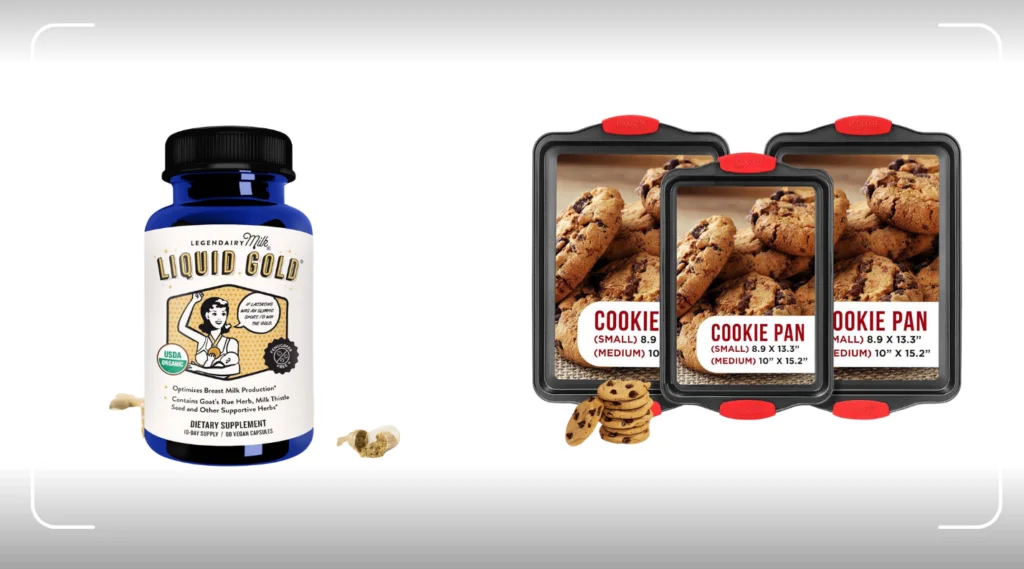
Your main image plays a crucial role in click-through rates (CTR), which directly impacts your ranking. Amazon prohibits text overlays, but you can strategically include keywords in product packaging or labeling.
Best Practices for Image Optimization
Let’s talk about why images matter so much on Amazon. When shoppers scroll through search results, they don’t read—they look. Your product image is the first impression that decides whether they click or keep scrolling. So, if you want more clicks (and ultimately more sales), your images need to stand out.
Here’s how to do it right:
- Make Your Product the Star – Amazon recommends that your product fills at least 85% of the image. A tiny product in a large white space won’t grab attention. Make it big, clear, and easy to see.
- Highlight What Makes It Special – If your product is “100% Organic” or “No Sugar Added,” don’t just write it—show it! Add text or icons to your secondary images so buyers instantly know why your product is better.
- Show It in Action – People love seeing products in use. If you’re selling a baking sheet, show it with freshly baked cookies. If it’s a water bottle, show someone drinking from it while hiking. This helps customers visualize owning and using your product.
- Use High-Quality Images – Blurry or dark images scream “low quality.” Use high-resolution photos with good lighting. Make sure colors look natural and details are sharp.
Why This Works
- More Clicks = Higher Rankings – When more people click on your product, Amazon’s algorithm sees it as relevant and pushes it higher in search results.
- Better Images = More Sales – A shopper who clicks is more likely to buy if your images clearly show quality, features, and benefits. More sales mean a higher Best Sellers Rank and even more visibility.
Your images are like your digital salesperson—make them work for you
2. Dynamic Pricing Strategies
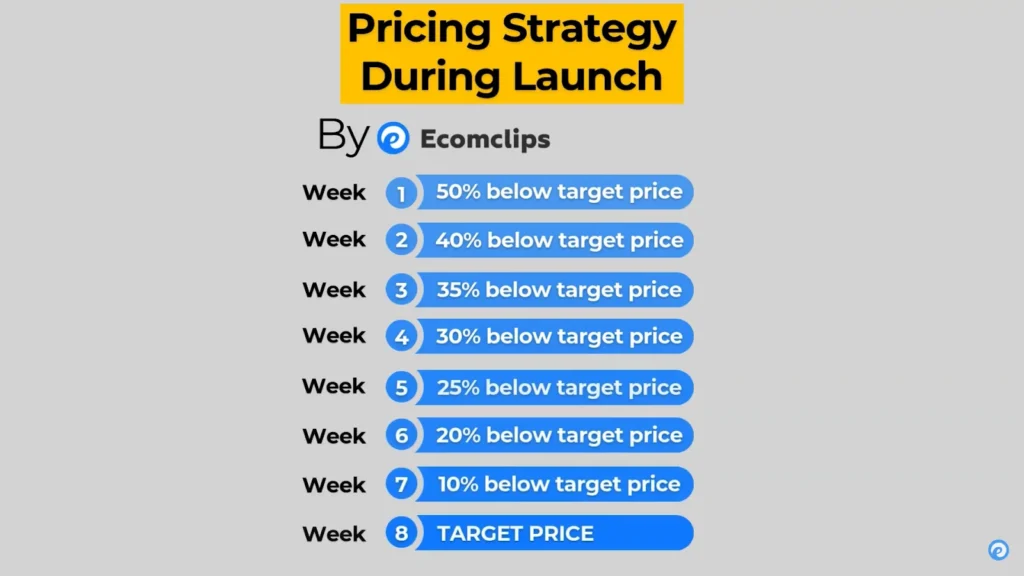
Amazon favors listings with strong sales momentum. Optimizing pricing strategically will help you maximize conversions and maintain a strong sales rank on Amazon.
Let’s be real—price matters. Shoppers on Amazon are always looking for the best deal, and Amazon’s algorithm rewards listings that sell fast. That’s why a smart pricing strategy can give you an edge over competitors and help you climb the rankings.
Here’s how to use pricing to your advantage:
1. The Honeymoon Period: Make the Most of Amazon’s Boost
- Amazon gives new products extra visibility for the first 60-90 days—this is your golden window to build momentum! But just being seen isn’t enough—you need to convert those views into sales.
- Start with a lower price—about 50% below your target price. This makes your product hard to resist.
- Slowly increase the price every two weeks by about 10% until you reach your ideal price.
This method helps you build sales velocity, which tells Amazon’s algorithm, “People love this product!” and keeps your ranking strong.
2. Competitive Pricing: Stay One Step Ahead
You don’t have to be the cheapest, but you do need to be smart about pricing.
- Undercut your competitors slightly—for example, pricing at $5.99 instead of $7.99 can make a huge difference in clicks and sales.
- Use historical pricing data to find the sweet spot. Sometimes, lowering your price by just $1-$2 can dramatically improve conversions.
3. Reviving a Struggling Listing
- Got a product that’s stuck with low sales? No worries—you can bring it back to life.
- Lower the price temporarily to attract more buyers. This can reignite sales momentum and improve your ranking.
- Once the listing gains traction again, gradually increase the price while maintaining strong sales.
Why This Works
- Boosts Sales Velocity – More sales = better ranking. Amazon’s algorithm rewards fast-selling products by pushing them higher in search results.
- Encourages Impulse Buys – A well-priced product feels like a great deal, making shoppers more likely to buy immediately.
- Increases Repeat Purchases – If buyers love your product and got it at a good price, they’re more likely to come back and order again.
Price isn’t just a number—it’s a strategy. Play it smart, and you’ll see your rankings and sales soar!
If you want to know in detail watch this- https://www.youtube.com/watch?v=Lx4GKaY2s1Q&t=737s
3. SEO Optimization Across All Fields
Amazon SEO: Optimizing Every Field to Rank Higher
When it comes to ranking on Amazon, many sellers focus only on keywords in the title or bullet points. But here’s the truth—Amazon indexes multiple listing elements, and optimizing all of them can give you a serious advantage. Think of it like this: The more places you insert relevant keywords, the more chances your product has to show up in search results.
Let’s break it down step by step.
A. Title Optimization: The Power of Exact-Match Keywords
Your title is the most important SEO field because Amazon gives it the most weight. So, you need to make every word count.
- Use exact-match keywords – Instead of just saying “Vitamin Supplements,” go for something more targeted like “Vitamin Supplements for Men for Energy.” This helps Amazon connect your product to relevant searches.
- Use keyword tools – Tools like Helium 10 and Amazon autocomplete can show you what people are actually searching for. Adding these high-volume keywords to your title increases visibility.
Pro Tip: Keep the title readable! A keyword-stuffed title might rank high but won’t get clicks if it doesn’t make sense.
B. Bullet Points: Balancing SEO & Readability
Amazon’s algorithm scans bullet points for long-tail keywords, so don’t waste this space.
- Prioritize Amazon’s algorithm first—integrate high-volume keywords naturally.
- Make it readable for shoppers—bullet points should explain the benefits while still including important search terms.
Example: Instead of “Organic, gluten-free, vegan protein powder supplement,” try:
“Get clean energy with our organic, gluten-free, and vegan protein powder. Ideal for post-workout recovery!”
C. A+ Content & Brand Story: The Hidden SEO Opportunity
Many sellers don’t realize this, but Amazon actually indexes alt text in A+ Content—which means you can sneak in extra keywords without affecting readability.
- Alt Text Optimization – Add keyword-rich descriptions for every image in your A+ content. Want to analyze competitors? Use Image Alt Text Viewer to see what they’re doing.
- Brand Story – You can link up to 96 related products in your Brand Story section. This boosts cross-sales and helps customers explore your entire product line.

D. Backend Optimization: The Secret SEO Boost
The backend of your listing isn’t visible to customers, but Amazon still indexes it. This is where you can add even more keywords to increase discoverability.
- Item Type Keyword – Make sure this is correctly filled in, as it helps categorize your product.
- Search Terms/Generic Keywords – This is where you can include:
– Exact-match keywords
– Common misspellings (because people make mistakes!)
– Spanish terms (since many U.S. shoppers search in Spanish) - Use Helium 10’s Frankenstein – This tool helps create a 250-byte optimized keyword list so you don’t waste any space.
E. Product Description & Q&A Optimization: More Indexed Fields
Even if you have A+ Content, don’t ignore your product description—Amazon may still index it.
- Product Description – Reuse important keywords in a natural way. If a customer scans this section, they should immediately understand what makes your product great.
- Q&A Section – Many buyers read the Q&A before purchasing, so use this space wisely.
– Answer unstated claims indirectly—if your product helps with joint pain, mention it without making a medical claim.
– Use AI-generated Q&A summaries to highlight the most common concerns.
F. External & Internal Links: More Traffic = More Sales
Amazon loves listings that get traffic from outside sources because it increases their credibility.
- Meta Description for Brand Store – Optimizing this in Seller Central helps your Amazon store show up in Google search results.
- Social Media & External Links – Driving traffic from places like Facebook, Instagram, or blogs tells Amazon your listing is popular and relevant, which can improve rankings.
Why This Works
- More Indexed Fields = Higher Discoverability – Amazon’s algorithm uses all these fields to determine relevance. The more areas you optimize, the more search results you’ll appear in.
- Higher Rankings = More Sales – A well-optimized listing attracts more customers, increases sales velocity, and improves your Best Sellers Rank over time.
Bottom line? SEO isn’t just about stuffing keywords in your title. Every part of your listing—from A+ content to backend keywords—affects how well your product ranks. Optimize everything, and watch your organic sales grow!
4. Advanced Tips
Amazon’s algorithm isn’t static—it’s constantly changing. What worked last year (or even last month) might not work today. That’s why successful sellers never stop optimizing their listings. They stay ahead of the game by keeping an eye on Amazon’s updates and using the right tools.
Let’s break down some key strategies to help you stay competitive.
1. Watch Out for Amazon’s Rule Changes
Amazon regularly updates its guidelines, and if you’re not paying attention, you could miss something important.
- Keyword Limits – Amazon has changed the byte limit for backend search terms before, and they could do it again. If you’re over the limit, your extra keywords won’t be indexed.
- Listing Compliance – Certain words (like “FDA Approved” or “Cure”) can get your listing flagged. Always check Amazon’s latest content rules.
- A+ Content Updates – Amazon sometimes adds new modules for enhanced branding, so keep an eye on what’s available.
Keep learning and adapting, so you’re never caught off guard.
2. Use the Right Tools for Smarter Optimization
Manually tracking every change in Amazon’s algorithm is impossible, but the right tools can help.
- Helium 10 – Great for keyword research, competitor analysis, and backend optimization.
- Image Alt Text Viewer – This lets you see what keywords competitors are using in their A+ content images.
- Search Query Performance Reports – Found in Amazon Brand Analytics, this tool shows you which keywords bring in the most sales so you can focus on what works.
Using these tools helps you make data-driven decisions, rather than guessing what will work.
3. The Future of AI & Amazon SEO: What’s Next?
Amazon’s AI capabilities are getting smarter, and the way products are indexed might change in the future.
- AI Indexing Potential – Amazon may start indexing text inside images. If this happens, adding keyword-rich text to product images could become a powerful SEO trick.
- Voice Search Optimization – More shoppers are using Alexa and voice search, which means optimizing for natural, conversational keywords will become even more important.
- Amazon’s Algorithm Learning from Click Behavior – If Amazon’s AI starts analyzing shopper behaviour even more deeply, things like click-through rate (CTR) and time spent on your listing could impact rankings.
What does this mean for you? Stay flexible. SEO on Amazon isn’t set in stone—it’s evolving. Keep testing, optimizing, and adapting, and you’ll always stay one step ahead!
Final Thoughts: Stay Optimized, Stay Ahead
Ranking on Amazon without spending a dime on PPC isn’t impossible—it just takes smart SEO strategies and continuous optimization. From image optimization and pricing strategies to keyword-rich content and backend improvements, every small tweak can help boost your sales rank.
But here’s the key: Amazon’s algorithm is always changing. What works today might not work tomorrow. That’s why top sellers never stop optimizing. Keep monitoring Amazon’s updates, leverage powerful tools like Helium 10, and stay ahead of new trends—like AI indexing and voice search.
At the end of the day, Amazon rewards relevance, engagement, and conversions. The better you optimize your listing and understand Amazon’s system, the higher you’ll rank—all without relying on paid ads.
So, keep testing, keep learning, and most importantly—keep growing your sales organically!
Additional Readings:
1. Guide to Amazon Backend Keywords & SEO | Best Practices
2. SEO-Optimized Amazon Product Titles: The Secret to Boosting Your Sales
3. Amazon Alt Text SEO Hack – Secret That Can 2X Your Sales in 2025
4. Amazon Main Image Hacks to Skyrocket Your Amazon Sales in 2025
